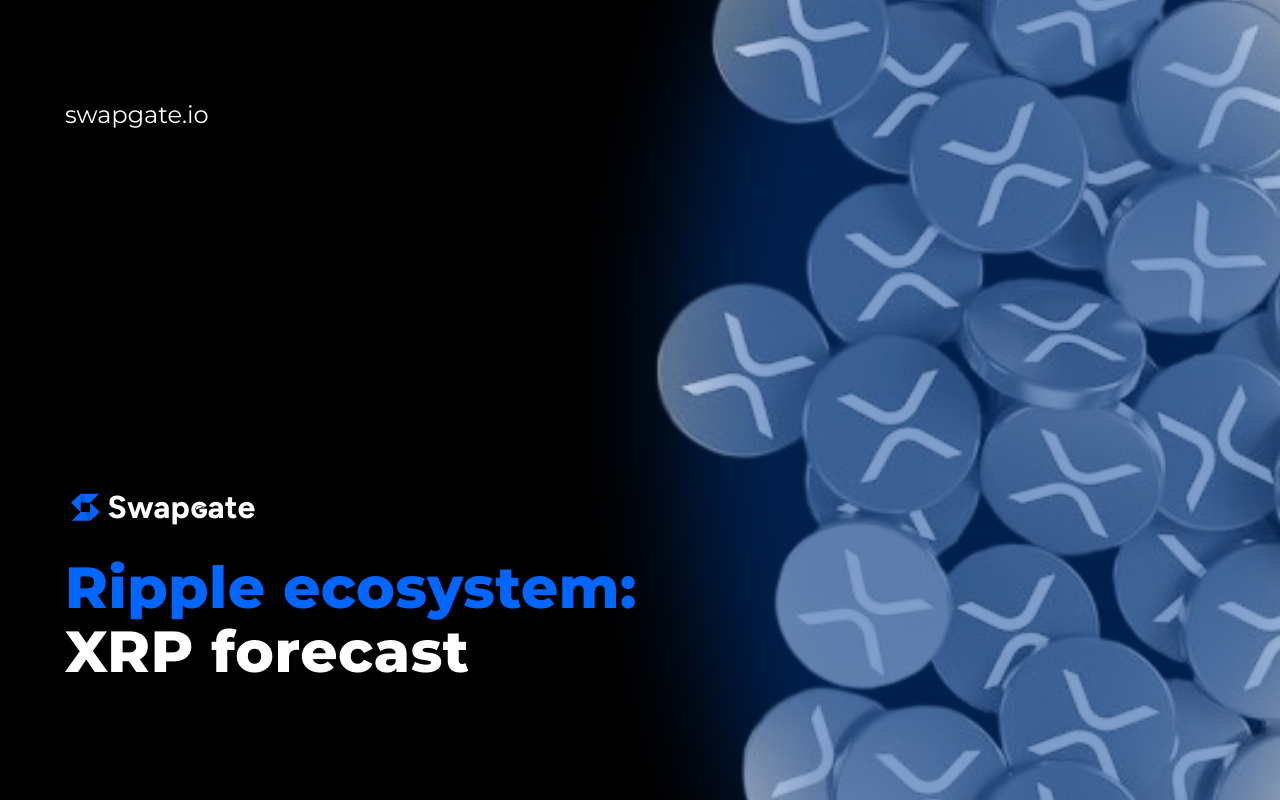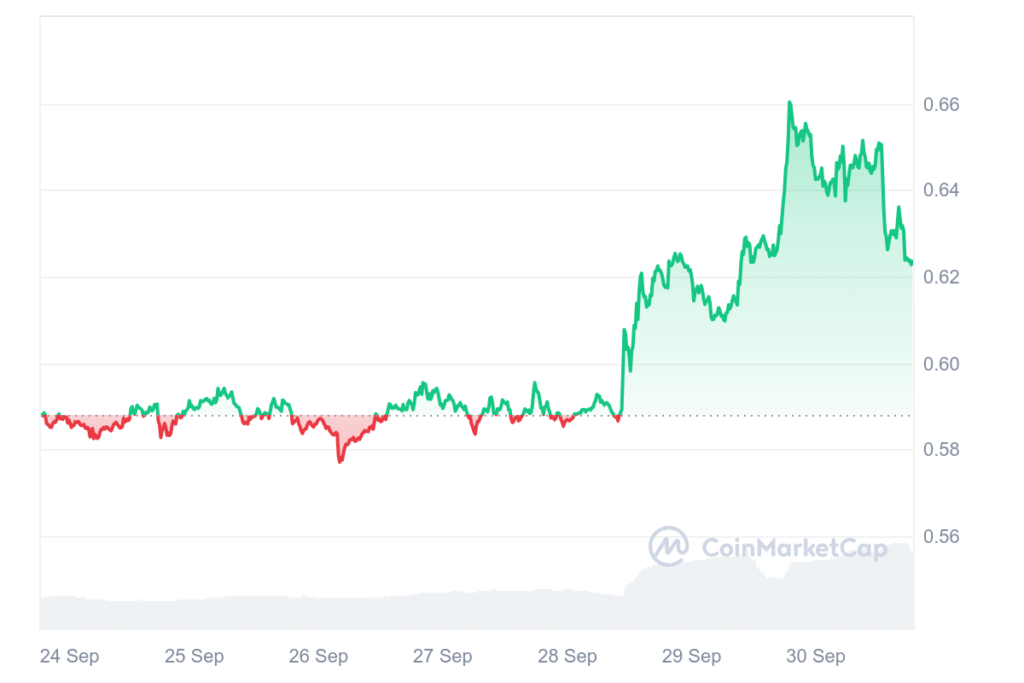
Often, other cryptocurrencies remain in the shadow of Bitcoin, although they offer users a completely different approach to digital money. XRP, created by Ripple, is positioned as a faster and cheaper alternative for international payments. But is it really so? In this article, we’ll dive into the project’s history, explore Ripple’s technological features, and discuss what the XRP price will be in the coming years.
The Birth of Ripple: From Idea to Reality
The roots of Ripple go back to 2004 when Ryan Fugger developed a prototype of the RipplePay payment system. However, the real story of XRP begins in 2012, when Jed McCaleb renamed the company to Ripple Labs and introduced the world to the digital currency XRP. Initially, XRP was designed to facilitate international money transfers between financial institutions. The goal was to create a faster, cheaper, and more transparent alternative to traditional systems like SWIFT.
XRP News
- 2012: Official introduction of XRP and the launch of the Ripple network.
- 2013-2015: Active development of technology and expansion of the partner network. Ripple begins collaborating with large banks and financial institutions.
- 2017: The peak of cryptocurrency popularity. The XRP rate reaches an all-time high.
- 2018-2020: A period of consolidation and regulation. The cryptocurrency market experiences a downturn, but Ripple continues developing its technology.
- 2021 and beyond: Renewed interest in XRP amid growing institutional investments.
XRP’s Role in the Ripple Ecosystem
XRP plays a key role in the Ripple ecosystem. It’s used to provide liquidity and facilitate the exchange of various currencies in real-time. Thanks to Ripple’s unique technology, transactions using XRP are instantaneous and come with minimal fees.
The development of XRP has faced several challenges, including:
- Regulatory constraints: Different countries have varying approaches to cryptocurrency regulation, creating uncertainty for projects like Ripple.
- Competition: Many other cryptocurrencies and payment systems compete with XRP.
- Market volatility: XRP’s price is subject to significant fluctuations, which may deter some investors.
Despite these challenges, Ripple has achieved significant success. The company has partnered with hundreds of financial institutions worldwide. Ripple technology is used to create various financial products and services.
XRP Price Evolution
Since its inception, XRP has demonstrated high volatility. There have been periods of rapid growth, during which XRP’s price increased multiple times, and periods of deep correction.

- 2017 Peak: One of the brightest events in XRP history was its rapid price increase in late 2017. Amid the general hype around cryptocurrencies, XRP reached its all-time high.
- Correction and Consolidation: After the rapid growth of 2017, a deep correction of the cryptocurrency market followed. XRP’s price significantly decreased and entered a consolidation phase for several years.
- Recent Volatility: In recent years, XRP price continues to show high volatility, reacting to news about Ripple, regulatory changes, and the overall situation in the cryptocurrency market.
XRP’s price is influenced by many factors, both fundamental and technical:
- Ripple news: Any news about partnerships, lawsuits, or technological updates at Ripple significantly affects XRP price.
- Regulatory environment: Changes in cryptocurrency legislation can greatly impact XRP price.
- Overall cryptocurrency market situation: XRP’s correlation with other major cryptocurrencies like Bitcoin is very high.
- Supply and demand: Basic economic principles of supply and demand also play a key role in shaping XRP’s price.
What Will the Price Be? XRP Forecast
Predicting cryptocurrency prices is a challenging task fraught with uncertainty. Many experts agree that XRP’s long-term prospects look quite promising. However, short-term price fluctuations can be significant.
Factors that may influence XRP’s price in the future:
- Ripple’s success in implementing its strategy: If Ripple can successfully scale its solutions and attract new partners, this will positively affect XRP’s price.
- Changes in the regulatory environment: More clear and favorable regulatory frameworks can contribute to XRP’s price growth.
- Blockchain technology advancements: Progress in blockchain technology may open up new opportunities for XRP use.
In October 2024, XRP’s price may range from $0.42 to $0.75, according to market data and technical analysis. There is a chance of a breakout to the upside as the cryptocurrency has already crossed a key trendline, which is usually interpreted as a bullish signal. Analysts note that XRP is trading above the 50-, 100-, and 200-day moving averages and shows positive values in the MACD and RSI indicators, which strengthens growth predictions.
In August, Ripple partially settled its dispute with the SEC by paying a $125 million fine, much less than the demanded $2 billion. However, the legal proceedings continue, and their outcome may impact XRP’s future price movement.
Cross-Border Payments: XRP’s Main Advantage
The primary goal of creating XRP was to optimize international money transfers. Traditional transfer systems, like SWIFT, are often characterized by high costs, delays, and complexity. XRP offers a solution to these issues through the following advantages:
- Speed: XRP transactions are almost instantaneous.
- Low fees: The cost of transferring with XRP is significantly lower than with traditional systems.
- High throughput: Ripple’s network can process a large number of transactions per second.
- Transparency: All transactions in the Ripple network are public and transparent.
How XRP is Used in the Banking Sector
The banking sector is one of the key segments where XRP can find wide application. Many banks around the world are already partnering with Ripple and using XRP technology to optimize their payment systems.
- Corporate payments: XRP allows companies to make fast and cheap international payments.
- Real-time settlements: XRP enables real-time settlements, which is especially important for trade operations.
- Liquidity management: XRP can be used to manage liquidity between various currencies.
Other XRP Use Cases
In addition to cross-border payments and the banking sector, XRP can be applied in other areas:
- Micropayments: Thanks to low fees, XRP is ideal for micropayments, such as in online games or when paying for digital goods.
- Asset management: XRP can be used to manage various assets, including stocks, bonds, and other securities.
- Financial inclusion: XRP can help millions of people without access to banking services gain access to financial services.
Exchange XRP with SwapGate
Want to quickly and easily exchange your XRP for another cryptocurrency or fiat money? SwapGate offers a convenient and secure service for cryptocurrency exchange without unnecessary formalities.
Why Choose SwapGate?
- No registration and KYC: You don’t need to go through a lengthy registration and identity verification process. Just enter your wallet and choose the pair for exchange.
- Instant swaps: Your exchanges will be completed within minutes, with no delays.
- Wide choice of cryptocurrencies: On SwapGate, you can exchange XRP for many other popular cryptocurrencies and fiat currencies.
- High security: Your funds are securely protected by modern security systems.
- Simple interface: Even beginners can easily navigate SwapGate’s interface and make their first exchange.
How to Exchange XRP on SwapGate in Just 3 Steps:
- Choose an exchange pair: Enter your XRP wallet address and select the cryptocurrency or fiat currency you want to exchange for.
- Confirm the exchange: Carefully check all exchange details and confirm the transaction.
- Receive your funds: The exchange will be completed instantly, and you will immediately see your funds in the new wallet.
Comparison of SwapGate with Other Exchange Services
| Criteria | SwapGate | Other Services |
|---|---|---|
| Registration | Not required | Usually required |
| KYC | Not required | Often required |
| Exchange Speed | Instant | Can take time |
| Cryptocurrency Choice | Wide | Limited |
| Security | High | Varies |
| Ease of Use | Simple and intuitive | May be complex for beginners |
SwapGate is the ideal solution for those who value speed, security, and convenience when exchanging cryptocurrencies.
Conclusion
XRP is a cryptocurrency that sparks much debate and discussion. On the one hand, it has enormous potential to revolutionize the global financial system, offering fast, cheap, and transparent international payments. On the other hand, XRP faces several challenges, including regulatory constraints and high market volatility.
What can be predicted for XRP? The answer to this question depends on many factors, including:
- Ripple’s success in implementing its strategy: Ripple’s ability to attract new partners and expand the application of its technology will determine XRP’s future.
- Changes in the regulatory environment: Clearer and more favorable regulatory frameworks could boost XRP price and adoption.
- Blockchain technology advancements: New blockchain technologies and standards could both strengthen XRP’s position and introduce new competitors.
- Overall development of the cryptocurrency market: Trends in the cryptocurrency market, in general, will significantly influence XRP’s price and popularity.
In conclusion, XRP is a promising project with great potential. However, for XRP to fully realize its potential, time and resolution of several issues are needed. Investors considering investing in XRP should approach this decision with caution and an understanding of all risks.